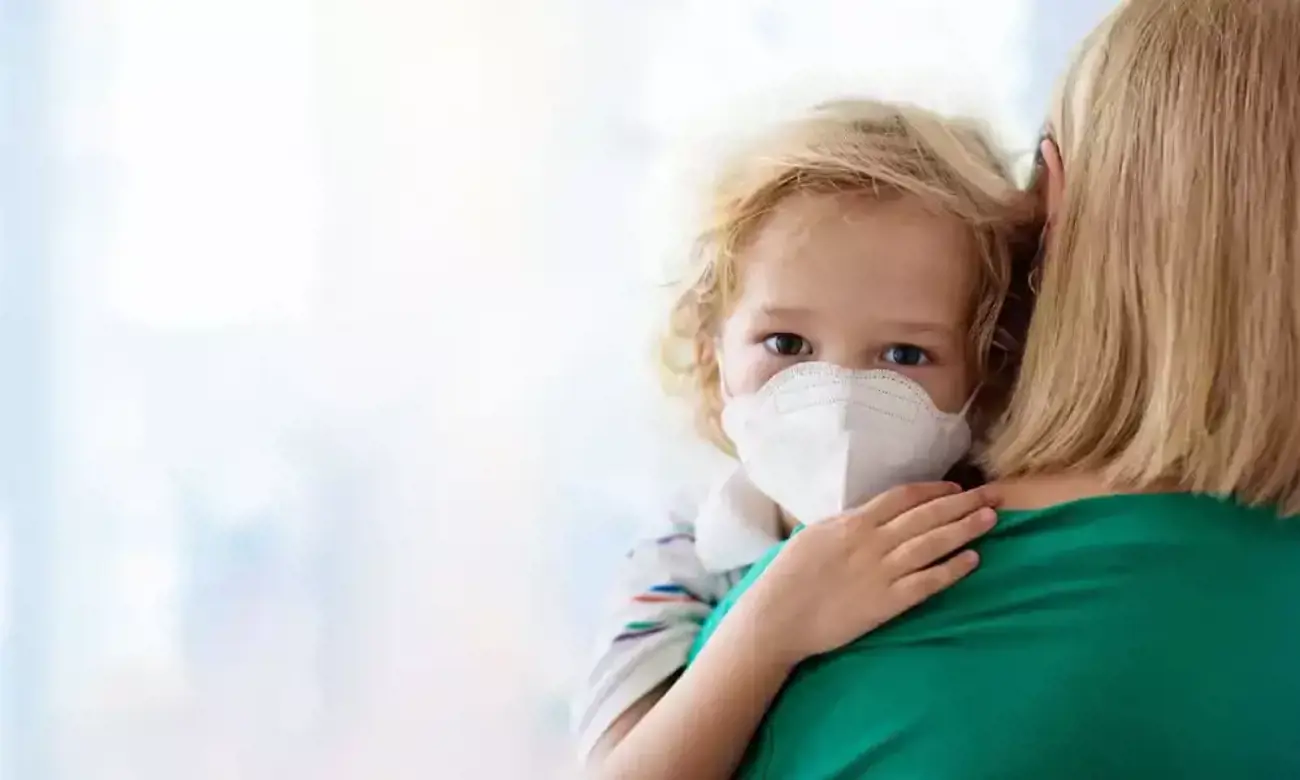It’s interesting to learn that although we pivoted our work, social lives and formal child care arrangements when the pandemic first hit, there wasn’t a great upheaval in the division of child care duties at home.
In fact, new research by the Australian Institute of Family Studies (AIFS) has found that COVID-19 ‘had minimal impact’ on the way mums and dads shared child care responsibilities during the May/June lockdown.
To understand how COVID-19 did affect Australians earlier this year, the AIFS surveyed 7,306 people around the country (from 1 May to 9 June, 2020) and analysed their experiences in its first Life During COVID-19 Report.
Here’s what they learnt about child care arrangements during COVID-19:
- The pandemic largely moved work and child care to the home
This report confirms that social distancing and home isolation had an immense impact on working life, with 60 per cent of respondents ‘always working from home’ during the survey month, compared with just seven per cent before COVID-19.
This work-from-home shift had a flow-on effect to child care, with 64 per cent of those surveyed using parent-only care, up from 30 per cent before the pandemic.
As a consequence, life became a juggling act for many work-from-home parents, with 40 per cent of these respondents saying they were always or often ‘actively’ caring for children while working.
Of the remaining 60 per cent:
- 28 per cent said they were always or often ‘passively’ caring for their kids
- 21 per cent said they were sometimes ‘actively’ or ‘passively’ caring for children and
- 11 per cent said someone else looked after their child while they worked (usually the other parent).
- COVID-19 brought about substantial drops in the use of approved child care and grandparent care
Although essential workers needed formal child care as much (or more) than ever as the pandemic hit, this report indicates that, overall, just 26 per cent of the surveyed parents used approved child care, compared with 52 per cent of parents before COVID-19.
Only one per cent of parents started using approved child care.
There was also a big drop in the use of grandparent or other informal child care, from 32 per cent to just nine per cent.
Before COVID-19, three in 10 grandparents provided at least weekly child care, but many of these grannies and grandads totally stopped caring for their grandkids during lockdown.
There wasn’t such a big change in the use of nannies and babysitters, though, with eight per cent of families using this kind of care before COVID, and five per cent still relying on it during the pandemic.
All in all, the age of the child had a bearing on the type of child care used during COVID-19. The majority of school children (aged six to 12) received parent-only care, and amongst under-fives, there was a fairly equal split between approved care and parent-only care.
- The division of child care between genders was barely affected by the pandemic
AIFS Director, Anne Hollonds says that, ‘Even though we’re all spending so much more time at home, entrenched gender patterns are still evident’ and, ‘Women are still five times more likely to take on the primary caring role’ for children.
In percentage terms, COVID-19 had minimal impact on the division of child care responsibilities between mothers and fathers in May/June, with:
- 52 per cent of mums saying they ‘always or usually’ looked after the kids at this time, compared with 54 per cent doing this before COVID-19;
- 37 per cent reporting that child care was shared equally between the parents during the pandemic, compared with 38 per cent beforehand; and
- 11 per cent of dads saying they ‘always or usually’ looked after the kids during COVID-19, compared with eight per cent pre-pandemic.
The report did find a larger shift amongst parents of under threes, though. Amongst parents of babies and toddlers, equal sharing of child care increased from 28 to 37 per cent during COVID-19.
Care ‘always or usually’ provided by mums of under threes went down from 63 per cent to 56 per cent, but it was still rare for dads in these families to be the primary carer. Around 10 per cent of these dads were primary carers, both before and during the pandemic.
Housework was another area where not much changed.
In 41 per cent of families, the woman was doing the bulk of the housework when surveyed (compared with 43 per cent before COVID-19), and in 48 per cent of families, there was an even split between the genders when it came to housework (compared with 46 per cent pre-pandemic).
In summary, this survey shows that COVID-19 created seismic shifts in where parents worked and what child care they used in May/June this year.
Grandparent care emerged as a ‘casualty of the pandemic,’ and despite the introduction of the Child Care Relief Package on 6 April, 2020, there was a steep decrease in the use of approved care.
As COVID-19 continues to be a worry here and overseas, this survey is a good reminder that parents need to support one another to juggle work, child care and life, and enlist extra help as needed.
Early childhood educators, nannies, babysitters and grandparents can ease the child care load (whether in person or virtually), and we wish you well in adapting to this year’s challenges and keeping all the balls in the air.
The Life During COVID-19 survey investigated the experiences of people of all ages, with and without children, and it’s the first survey in the Families in Australia Survey series.
To learn more about how COVID-19 impacted Australians during the first lockdown, you can read the AIFS report here.


































